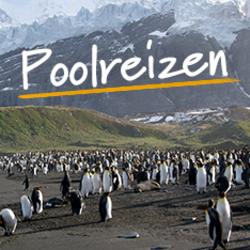Activities
- Cycling
- Road Cycling
- Cycle rural roads through peaceful Japanese countryside. Discover temples, zen gardens and geisha districts in Kyoto. Ride along the picturesque shores of the Noto Peninsula. Stay in authentic guesthouses and bathe in hot springs. Visit the UNESCO historic village of Shirakawa-go
- E-Bike
Food
Activities
-
1
Start Tokyo
Our tour starts in Tokyo, Japan’s busy capital boasting a unique contrast of ultramodern and traditional, from neon-lit skyscrapers to historic temples. With so much to see and do in Tokyo, we recommend arriving a day or two early to explore the array of attractions at your own pace. Exodus can book additional accommodation for you prior departure; please contact our Operations or Sales teams for details and prices.
-
2
Morning orientation walk and free afternoon to explore the city's highlights
Today we enjoy a half day orientation tour of some Tokyo's highlights, starting from the popular district of Asakusa, where we visit Semso-ji, a Buddhist temple dating back to the 7th Century. We approach the temple via the Nakamise, a shopping street where we can find a variety of traditional, local snacks and souvenirs. We then continue towards the area of Ueno and walk through the beautiful public park filled with temples, shrines and about half a dozen museums. The afternoon is free for individual sightseeing and your leader will be giving recommendations on other must-see attractions in the city such as Shibuya, known for the busy crossing, and Meiji Shrine.
-
3
Train to Kanazawa, the gateway to the Noto Peninsula; afternoon cycle loop and sightseeing
In the morning we take the express train (approx. 2.5 hours) to Kanazawa, in the western Ishikawa Prefecture, an atmospheric town that once rivalled Kyoto as the historical jewel of mainland Japan. After lunch we enjoy a short cycling loop around the city, a good opportunity to fine-tune the bikes whilst enjoying some of the main attractions in town. We will ride through the popular Nagamachi Samurai District, an area which preserves a historic atmosphere featuring samurai residences, narrow lanes and water canals. We also visit Kenrokuen, one of Japan's most beautiful landscape gardens, which is particularly spectacular during cherry blossom and autumn season.
-
4
Cycle from Kanazawa to Togi, along rugged coastline and past fishing villages
This morning we leave Kanazawa and cycle along the Sea of Japan until reaching the popular Chirihama Beach driveway, where we pedal comfortably on the hard packed sand beach for about 8km. This route is a unique attraction in Japan as it is open not only to bikes but also to cars, allowing drivers to get really close to the water's edge. Small stalls selling hamayaki (grilled shellfish and fish) are set up along the coast from spring to summer and offer a good opportunity for a refreshment stop. En route we also visit Myojoji Temple dating back to the 17th Century and boasting a wonderful early five storied Edo Period pagoda. We continue on the coastal cycling path and then along the dramatic Noto Kongo Coast, often considered the most dramatic section of the Noto Peninsula, until reaching Togi. Here we check in at a traditional Japanese Inn, offering rooms with traditional futon bedding as well as a public bath (onsen)
-
5
Rewarding coastal ride to Wajima; enjoy scenic ocean views and rock formations en route
Today we follow the beautiful coastline north of the Noto Peninsula, as we cycle on quiet back roads lined by traditional wooden houses and rice fields. The coastal journey to Wajima is undulating with some occasional steep climbs but the effort will be rewarded by spectacular views of rugged coastline and interesting rock formations along the way. In the afternoon we settle in our accommodation in Wajima, a city centered around a protected harbor on the Sea of Japan coast and famous for its lively morning market.
-
6
Early morning optional market visit; cycle to Suzu; enjoy coastal views and verdant rice paddies of Senmaida
This morning we have the option of joining the leader for an early visit to the Wajima Morning Market, believed to date back over a thousand years. Every day vendors and elderly women gather here to sell various goods, including fresh seafood and lacquerware, the most well known local handicraft. We then set off on our bikes and pedal along the remote and rural coastal northern stretch of the Noto Peninsula throughout the day, passing famous picturesque rice fields and salt farms en route. The most famous sight we visit today is Senmaida, a hillside of over 1000 terraced rice fields whose colours and shapes contrast to the background of the blue sea. We reach Suzu late afternoon and check in at our hotel by the sea.
-
7
Final ride along the Noto Peninsula to the popular hot spring resort of Wakura Onsen
Leaving Suzu, today we cycle the last stretch of the Noto Peninsula as we follow the undulating coastal route around Toyama Bay. Along the way we enjoy coastal views and a scenic landscape dotted by fishing villages until reaching the Wakura Onsen, a popular hot spring resort which history goes back thousands of years. According to a legend, a local fisherman found a wounded white heron curing its body in the ocean’s hot water. Today the local waters rich in natural salts and minerals are still flowing and their healing properties attract large numbers of visitors each year. We will have the opportunity to soak in the hot springs at our traditional accommodation or in one of the public baths in town - a regenerating treat after days of cycling.
-
8
Travel to UNESCO Shirakawa-go village by train and bus; overnight in a traditional gassho-zukuri farmhouse
Today we take a break from cycling and experience a dramatic change of landscape as we travel inland by train and then bus (approx. 3 hours) to Shirakawa-go, a spectacular secluded mountainous region which was cut off from the rest of the Japan for a long period of time. Villages in this area are famous for their traditional gassho-zukuri farmhouses, which were declared a UNESCO site in 1995. Their unique architectural style characterised by steep thatched roofs developed over many generations with the aim of withstanding heavy snowfalls during winter whilst providing a large attic space for the cultivation of silkworms. We arrive in Shirakawa-go in the afternoon in time to enjoy a leisurely walk through the picture-perfect mountain village, with the opportunity to visit some of the oldest buildings. Although not always guaranteed due to limited availability, we usually spend the night at one or more gassho-zukuri houses, run by a local farmers, allowing us to get a real feel of a Japanese family home.
-
9
Challenging ride to Hida Takayama, at the foothills of the Japanese Alps
Today is the most challenging ride of the trip as we cycle inland to Hida Takayama, at the foothills of the Japanese Alps. Riding out of Shirakawa-go, from an altitude of approx. 500m above sea level, we gradually climb up 1100m for the first 45km of the route. There are some wonderful views to be enjoyed along the way, from the picturesque shores of Miboro Lake and quaint rural villages to hillsides and forested valleys which burst in colour during the autumn season. On the last section of the ride we will enjoy two great descents before reaching our destination Hida Takayama, often named Little Kyoto because of the similarity of its architecture and quaint atmosphere.
-
10
Cycle to the castle town of Gujo Hachiman, past little villages, local shrines and paddy fields
Today we cycle the Hida Seseragi Highway, a beautiful route which follows the swift mountain streams and one of the most popular places to experience the striking autumn colours in Japan in season. Riding past little villages, shrines and paddy fields, we reach the pleasant riverside town of Gujo-hachiman, known for its pristine waterways and its 16th century castle. Before dinner there is time for a pleasant stroll through the vibrant town's centre and along the atmospheric canals and waterways which are still used daily by locals for washing rice, vegetables and laundry. Time and energy permitting there is also the option to walk to the hilltop castle built in 1559 by the local feudal lord from where one can enjoy wonderful vistas.
-
11
Cycle along the Nagara River to the town of Gifu
Today's pleasant and more leisurely ride follows the Nagara River, famed across Japan for its clear water and quiet beauty. Some sections of the riverside are particularly picturesque during cherry blossom season when over 400 cherry trees in full and glorious bloom. We pedal along the river for most of the day and make a stop in the pleasant town of Mino, a century-old production centre of high quality traditional Japanese paper. Our final destination today is Gifu where we should arrive in time for an optional visit to the castle located atop Mount Kinka. Overnight in Gifu City.
-
12
Travel to Kyoto by train; free time for sightseeing
Today we have another day off the bikes. After breakfast we travel by train (approx. 2 hours) to the wonderful city of Kyoto. With over 2000 temples, shrines and gardens, Kyoto is a treasure house of Japan's cultural heritage and remains undoubtedly one of the most fascinating cities in Asia. Unlike many other Japanese towns, it escaped the ravages of both the Second World War and modern urban development thereby keeping intact much of the spirit and architecture of traditional Japan. The day is free for individual sightseeing with many highlights awaiting to be explored including Nijo castle, built in 1603 as a residence for the Tokugawa shoguns, Kiyomiduzera temple and the scenic Fushimi Inari Shrine, featured in the movie Memoirs of a Geisha. We also recommend a walk in the historic district of Gion, which is at its most atmospheric in the early evening, when the lanterns are lit and apprentice geishas will flit about the back streets on their way to their appointments.
-
13
Final circular ride in Kyoto exploring the pleasant district of Arashiyama and two seasonal temples
Today's cycling loop explores some of the best areas and attractions of Kyoto, heading first towards Arashiyama, a pleasant district in the western outskirts of the city. The area has been a popular destination since the Heian Period (794-1185), when nobles would enjoy its natural setting. After pedalling through its charming centre, via the iconic Togetsukyo Bridge and bamboo grove, we continue back into Kyoto following a different route. En route we stop for a visit to Ryoanji Temple, the site of Japan's most famous rock garden, and the splendid Kinkakuji (also known as the Golden Pavilion), one of Japan's most iconic landmarks. Finally, we cycle via the famous Philosopher's Path, a pedestrian and cycling path that follows a cherry-tree-lined canal in northern Kyoto, until reaching Kyoto station where our last ride finishes.In the evening the leader will be arranging an optional celebratory farewell dinner in one of the most authentic restaurants in the city.
-
14
End Kyoto
The tour ends this morning after breakfast for land only clients.





























